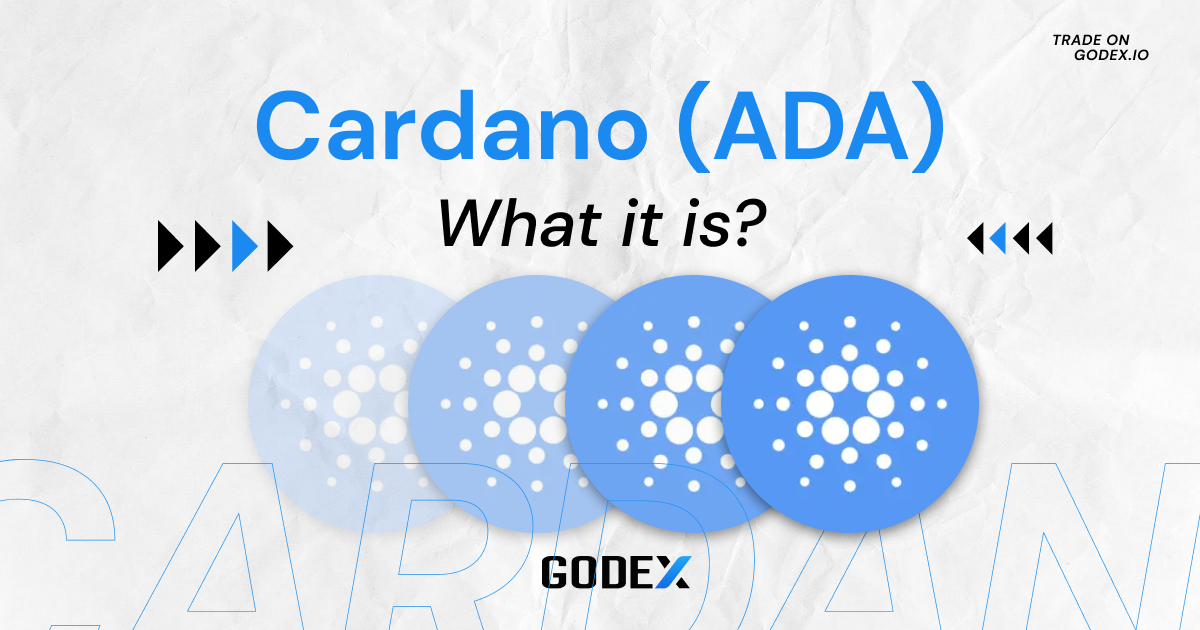Table of Contents
What is Cardano? Cardano (ADA) has emerged as one of the most rapidly expanding digital assets within the cryptocurrency sector. Since its launch in 2015, ADA has consistently been among the top 10 cryptocurrencies in terms of market capitalization, attracting a lot of attention. Its technological development is progressing swiftly, aiming to rival Ethereum in establishing an extensive blockchain network.
What sets Cardano apart is its use of scientific rigour in its consensus process and its distinctive layered architecture, offering a unique proposition compared to its blockchain rivals. With a development team that includes pioneers from Ethereum’s early days, there’s a growing belief that Cardano represents the future wave of cryptocurrency innovation.
In this article, we’ll talk everything about Cardano and the ins and outs of what you need to know about it as a cryptopreneur. Take a look.
The Origin of Cardano
Introduced in September 2017 by Charles Hoskinson, a co-founder of Ethereum, Cardano seeks to advance as a third-generation blockchain initiative, evolving beyond the foundational technologies of Bitcoin (the first generation) and Ethereum (the second generation). Its ambition lies in becoming a smart contract platform that is both highly scalable and energy-efficient.
A group of computer scientists and cryptography experts from prestigious universities like the University of Edinburgh and Tokyo University conducted academic research to support the Ouroboros consensus protocol, which underpins Cardano. Their mission was to forge a decentralised network capable of validating transactions efficiently and securely, with a keen focus on minimizing the energy footprint of the Cardano ecosystem.
Now, what is Cardano coin from the perspective of features and characteristics?
The Unique Architecture of Cardano’s Blockchain
Cardano’s architecture splits into two layers: the Settlement Layer for ADA transactions and the Computation Layer for smart contracts and d’apps. Time is organized into epochs and slots, with slot leaders elected based on their ADA stake to validate transactions. The Ouroboros protocol, ensuring a fair and secure leader election, emphasizes security with provable safeguards, assuming most ADA stakeholders are honest. This structure aims for a decentralised, democratic transaction validation process.
ADA: The Heart of Cardano
Ada is a global digital currency that facilitates secure, direct exchanges without intermediaries. Transactions are permanently recorded on the Cardano blockchain. Ada owners can stake their currency in a wallet, delegating to stake pools to earn rewards and support the network’s operation, or operate their pool to enhance reward chances. Eventually, Ada will power diverse applications and services on Cardano.
The Role of ADA in the Cardano Ecosystem
Cardano’s ADA serves as a medium of exchange, much like traditional cash, but it also has additional functions, distinguishing it from other cryptocurrencies like Ethereum and Bitcoin. Through Cardano’s Proof of Stake (PoS) protocol, ADA is staked on the blockchain to assist in verifying transactions, rewarding participants with more ADA for their contribution, thereby enhancing network security.
Moreover, ADA holders play a crucial role in governance, using their tokens to vote on protocol changes, ensuring a democratic approach to development. Looking ahead, ADA will be instrumental in powering Cardano’s smart contract platform, enabling developers to build applications on this secure, decentralised ecosystem.
What is Cardano Ada in comparison to Ethereum. Let’s get to know further.
Comparing Cardano and Ethereum: A New Generation of Blockchain?
Cardano and Ethereum share the ambition to become the leading decentralized blockchain platform for the development of new applications and protocols. Charles Hoskinson’s desire for a blockchain that could provide immediate scalability and improved security—aspects he was concerned Ethereum might not—was what motivated him to leave Ethereum. Presently, Ethereum faces scalability challenges and is undergoing its second major upgrade to improve its capacity. Despite Ethereum’s market capitalization being significantly larger than Cardano’s, it’s important to note that Ethereum had the advantage of an earlier start.
The Future Roadmap for Cardano
Launched in 2017, Cardano is a newer blockchain undergoing development with a roadmap divided into five phases. Having progressed beyond its Shelley phase, it’s advancing through:
Byron – Establishing the network’s basic architecture.
Shelley – Initiating mainnet launch and starting decentralization.
Goguen – Adding smart contract capabilities for decentralized apps.
Basho – Focusing on scaling and performance optimization.
Voltaire – Implementing a treasury and voting system for autonomy.
Though progress has seen delays, the Cardano team, led by Charles Hoskinson, remains dedicated to realising this ambitious, research-backed roadmap for a next-generation proof-of-stake blockchain.
The Market Performance of ADA
Now, you get a good grasp of what is Cardano crypto. Now, let’s talk about performance. Cardano (ADA) rose 5.06% in the last month; however, caution is urged because mid-spring has traditionally been a challenging season for its pricing. In 2022, ADA declined by 32.20%, with a 16.10% drop the following year in April. Despite a bullish spell in 2021 this very month with a 13.7% rise, ADA fails to keep up with other cryptocurrencies.
Cardano is currently trading at $0.65, up 4.48% year to date, and market sentiment towards the cryptocurrency is trending positive, which could influence its performance. Investors should keep an eye on changes in active addresses and market mood. They will have an impact on ADA’s future price trajectory in the unpredictable cryptocurrency market, which is being pushed by legislative developments and developing use cases such as DeFi and NFT.
How to Acquire ADA
Ada can be purchased or traded for fiat currencies or other digital currencies via cryptocurrency exchange platforms. You can have a look at Godex.io as your reliable partner in trading that avails up to 300 cryptos.
For those holding Ada, ensuring the security of your assets is paramount. This includes safeguarding your private keys, with a strong emphasis on privacy. It’s advisable not to store your cryptocurrency in exchange for an extended period. Instead, consider transferring your assets to a dedicated cryptocurrency wallet for better security. This point leads us to the next chapter.
Storing ADA: A Look at Cardano Wallets
There are multiple storage options for ADA, ranging from hardware wallets, mobile wallets, to desktop wallets. Cardano’s proprietary wallet, Daedalus, presents a comprehensive version of the Cardano blockchain, integrating advanced security measures. Alternatively, the Yoroi wallet serves as a streamlined Cardano wallet that operates efficiently as a browser extension, offering convenience and ease of use.
The Pros and Cons of Cardano
Pros:
- Cardano stands out as a highly eco-friendly blockchain, with Charles Hoskinson highlighting in a Forbes interview in 2021 that it’s over a million times more energy-efficient than Bitcoin.
- Boasting a capacity of over 250 transactions per second (TPS), Cardano eclipses Bitcoin’s roughly 4.6 TPS and Ethereum 1.0’s 15-45 TPS, promising greater scalability. Ethereum 2.0 aims to solve its predecessor’s scalability and security challenges.
- Cardano distinguishes itself by engaging with academic institutions for peer-reviewed research, fostering a blockchain that’s designed to evolve sustainably.
- While Cardano is innovating to surpass older blockchains like Ethereum, its shorter history and developer engagement present challenges.
- Amidst a crowded cryptocurrency space, Cardano’s more serious brand may struggle for the viral appeal seen with cryptocurrencies like Dogecoin, which have capitalized on meme culture.
Is Investing in Cardano a Good Idea?
Investing in Cardano appears to be a promising option, considering its rapid growth, technological advancements, and aim to rival Ethereum. Cardano’s commitment to scientific rigor, eco-friendliness, and scalability, alongside its democratic governance and smart contract capabilities, position it as a forward-thinking cryptocurrency. However, potential investors should weigh its pros and cons, including competition with more established platforms and market volatility. As with any investment, thorough research and consideration of market trends are crucial before making a decision.
FAQ
What are the advantages of Cardano?
Cardano boasts a highly eco-friendly blockchain, excels in transaction speed with over 250 transactions per second, and benefits from peer-reviewed research ensuring its evolution.
How is Cardano different from Ethereum?
Unlike Ethereum, Cardano offers a two-layer architecture for enhanced security and efficiency and employs a proof-of-stake protocol for consensus, aiming for scalability and lower energy consumption.
How can I buy and store ADA?
ADA can be acquired through cryptocurrency exchanges and securely stored in Cardano’s proprietary Daedalus wallet or the Yoroi browser extension wallet for convenience.
Start a Cryptocurrency exchange
Try our crypto exchange platform
Disclaimer: Please keep in mind that the content of this article is not financial or investing advice. The information provided is the author’s opinion only and should not be considered as direct recommendations for trading or investment. Any article reader or website visitor should consider multiple viewpoints and become familiar with all local regulations before cryptocurrency investment. We do not make any warranties about reliability and accuracy of this information.
 Alex Tamm
Alex Tamm 
Read more
Ripple (XRP) price has been widely discussed by the cryptocurrency community since it has gained public interest in 2017, even though it was founded by Chris Larsen and Jed McCaleb years before. The platform offers innovative blockchain solutions for the banking sector and has the potential to disrupt the whole finance industry. In recent years, […]
In this article we will talk about Ripple (XRP) and its price prediction. What is Ripple (XRP) Ripple is a San Francisco-based startup that was launched in 2012 by Ripple Labs as a global network both for cross-currency and gross payments. Ripple history began in 2004 with the discussions around the digital coin in the […]
You may well think that an article dedicated to a Tether price prediction or the Tether price in general is a little bit strange — it is a stablecoin after all. However, the price of Tether does fluctuate significantly, although it is nowhere near as volatile as non-stablecoin cryptos. This means that staying up to […]
In the article we share our vision at Zcash cryptocurrency main features and add several price predictions. As cryptocurrencies gain global acceptance and decentralisation slowly enters our lives, privacy becomes the main concern when talking about blockchain adoption. It is no secret that distributed ledger is by far the most secure and transparent technology ever […]
Chiliz coin (CHZ) offers a compelling opportunity for traders interested in the intersection of blockchain technology and sports. By enabling fans to influence team decisions through the Socios app, Chiliz directly monetizes fan engagement and connects with major sports teams like Juventus and Paris Saint-Germain. These partnerships not only enhance the platform’s visibility but also […]
The exponential growth of Bitcoin Satoshi Vision (BSV) against the general bear trend on the cryptocurrency market in autumn 2019 has impressed the community. Due to the increasing market capitalization, the newly emerged altcoin was ranked 5th on CoinMarketCap and managed to maintain its high position at the beginning of 2020. In the article we […]